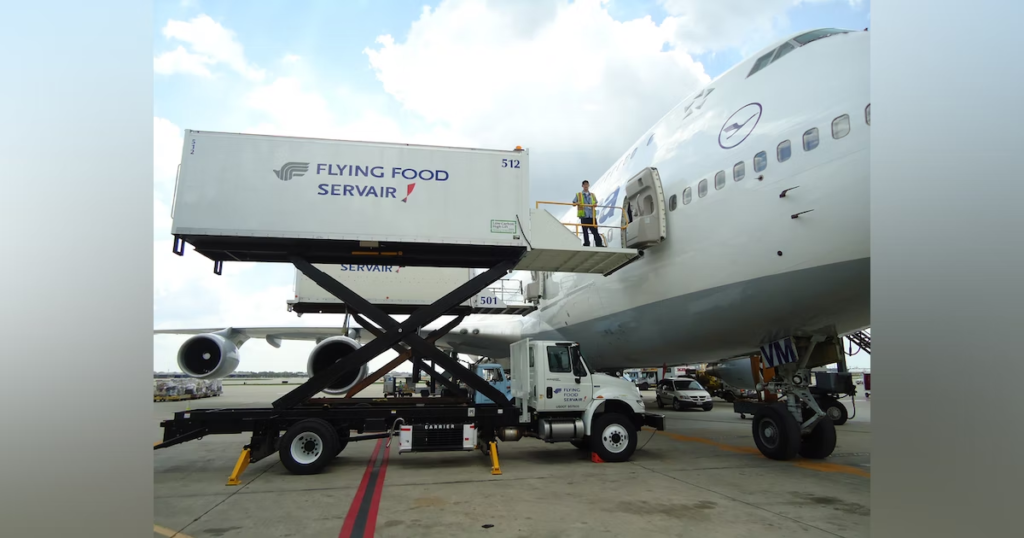Free Airport Fire Prevention Crew course (6months)
Airport Fire Prevention Crew:
Brief Job Description of Airport Fire Prevention Crew: To perform regular audits through various means including physical checking of various areas of airport and to ascertain the risk and hazards at the airport.
Personal Attributes: An Airport Fire Prevention Crew attributes would include good communication skills , physical endurance, responsibility and an eye for detail.


Safety and security procedures:
Comprehending the safety and security procedures
PC1. comply with the organisation’s safety and security policies and procedures
PC2. comply with the regulatory guidelines on safe conduct of operations and maintenance of conditions to thwart any acts of unlawful interference
PC3. report any identified breaches of safety, and security policies and procedures to the designated person
PC4. coordinate with other resources at the workplace (within and outside the organization) to achieve safe and secure environment
PC5. identify and mitigate any safety and security hazards like illness, accidents, fires or acts of unlawful interference if it falls within the limits of individual’s authority
PC6. report any hazards outside the individual’s authority to the relevant person in line with organisational procedures and regulatory guidelines

PC7. follow organisation’s emergency procedures for accidents, fires or acts of unlawful interference
PC8. identify and recommend opportunities for improving health, safety, and security to the designated person
PC9. ensure all health and safety records are updated and procedures well defined
Knowledge and Understanding
Organizational
Context
KA1. hazard identification and risk management as defined within the organizational policy and procedures
KA2. legislative requirements and organisation’s procedures for maintenance of safety and security standards and individual’s role and responsibilities in relation to this
KA3. how and when to report hazards

KA4. the limits of responsibility for dealing with hazards
KA5. the organisation’s emergency procedures for different emergency situations and the importance of following these
KA6. the importance of maintaining high standards of safety and security
KA7. implications that any non-compliance with safety and security may have on individuals and the organisation
Technical Knowledge

KB1. different types of breaches of safety and security and how and when to report these
KB2. evacuation procedures for workers and passengers
KB3. how to summon medical assistance and the emergency services, where necessary
KB4. how to use the health, safety and accident reporting procedures and the importance of these
KB5. regulatory guidelines on dealing with safety and security emergencies
Core Skills/ Generic Skills

| Writing Skills |
| The user/ individual on the job needs to know and understand how to: SA1. accurately complete a well written report in English language detailing the situations of emergency with attention to detail |
| Reading Skills |
| The user/individual on the job needs to know and understand how to: SA2. read instructions, guidelines/procedures/rules |
| Oral Communication (Listening and Speaking skills) |
| The user/individual on the job needs to know and understand how to: SA3. listen to and orally communicate information with all concerned Professional Skills Decision Making The user/individual on the job needs to know and understand how to: SB1. make decisions on a suitable course of action or response if permitted by the authority matrix Plan and Organize The user/individual on the job needs to know and understand how to: SB2. monitor efficient functioning of all activities SB3. plan and organise work to achieve targets and deadlines Customer Centricity The user/individual on the job needs to know and understand how to: SB4. communicate with customers in a courteous manner SB5. maintain effective relationship with peers Problem Solving The user/individual on the job needs to know and understand how to: SB6. identify trends/common causes for errors and suggest possible solutions to the supervisor / management SB7. identify and correct errors Analytical Skills The user/individual on the job needs to know and understand how to: SB8. analyse best possible solutions (cost, time, effort, etc) suited for operations Critical Thinking Skills The user/individual on the job needs to know and understand how to: SB9. concentrate on task at hand and complete it without errors SB10. apply balanced judgments to different situations Provide fire prevention services in and around various areas of airport Performance Criteria Performing fire prevention checks PC1. identify fire hazards through any of following : Sources of ignition Sources of fuel/combustible materials Sources of oxygen and other probability PC2. identify the people at risk PC3. evaluate the risk of the fire occurring PC4. remove or reduce the hazards that may cause a fire PC5. evaluate evacuation of people in proportion with Entry/Exits PC6. maintain Record of the actions related to prevention PC7. evaluate the Fire emergency response plan in co-ordination with emergency planner PC8. evaluate the Emergency escape / evacuation plan and ensure that it is displayed at strategic locations in the terminal buildings and all the major buildings in co-ordination with emergency planner. PC9. inspect installed Fire Extinguishers PC10. ensure that the inspection records are updated and displayed on the extinguishers. PC11. inspect installed fire hydrants PC12. evaluate and assess that the fire hydrants are accessible and have three feet clearance around the hydrant. PC13. perform pressure testing of fire Hydrants PC14. perform static tank inspection Inspection, Testing & Maintenance of Pump House PC15. perform calibration of pressure gauges PC16. ensure the jockey pump operates automatically when the system pressure falls below 2 bar of the set pressure. PC17. ensure that Main pump operates automatically when the pressure of the jockey pump falls below specified limit. PC18. ensure that pump system is to be maintained on Auto mode all the time. Inspection, Testing of Fire Alarm System (FAS PC19. inspect serviceability of Fire detectors, Manual Call Points (MCP) PC20. ensure that the fire alarm bells/horns/strobes must not be visually blocked, muffled, or muted. Fire Safety audit of Buildings PC21. identify the hazards/Risk PC22. ensure adequate fire protection is available PC23. ensure no escape routes & emergency exits are obstructed/ blocked. Knowledge and Understanding Organizational Context KA1. hazard identification and risk management as defined within the organizational policy and procedures KA2. legislative requirements and organisation’s procedures for maintenance of safety and security standards and individual’s role and responsibilities in relation to this KA3. how and when to report hazards KA4. the limits of responsibility for dealing with hazards KA5. the organisation’s emergency procedures for different emergency situations and the importance of following these KA6. the importance of maintaining high standards of safety and security KA7. implications that any non-compliance with safety and security may have on individuals and the organisation Technical Knowledge KB1. different types of breaches of safety and security and how and when to report these KB2. evacuation procedures for workers and passengers KB3. how to summon medical assistance and the emergency services, where necessary KB4. how to use the health, safety and accident reporting procedures and the importance of these KB5. regulatory guidelines on dealing with safety and security emergencies Core Skills/ Generic Skills Writing Skills The user/ individual on the job needs to know and understand how to: SA1. complete accurate, well written report in English language detailing the situations of emergency with attention to detail Reading Skills The user/individual on the job needs to know and understand how to: SA2. read instructions, guidelines/procedures/rules Oral Communication (Listening and Speaking skills) The user/individual on the job needs to know and understand how to: SA3. listen to and orally communicate information with all concerned Decision Making SB1. make decisions on a suitable course of action or response if permitted by the authority matrix Professional Skills Plan and Organize The user/individual on the job needs to know and understand how to: SB2. monitor efficient functioning of all activities SB3. plan and organise work to achieve targets and deadlines Customer Centricity The user/individual on the job needs to know and understand how to: SB4. communicate with customers in a courteous manner SB5. maintain effective relationship with the customers Problem Solving The user/individual on the job needs to know and understand how to: SB6. identify trends/common causes for errors and suggest possible solutions to the supervisor / management SB7. identify and correct errors Analytical Skills The user/individual on the job needs to know and understand how to: SB8. analyse best possible solutions (cost, time, effort, etc) suited for operations Critical Thinking Skills The user/individual on the job needs to know and understand how to: SB9. concentrate on task at hand and complete it without errors SB10. apply balanced judgments to different situations Work Effectively in a Team Performance Criteria Support the work team PC1. display courteous and helpful behaviour at all times. PC2. take opportunities to enhance the level of assistance offered to colleagues. PC3. meet all reasonable requests for assistance within acceptable workplace timeframes. PC4. complete allocated tasks as required. PC5. seek assistance when difficulties arise. PC6. use questioning techniques to clarify instructions or responsibilities. PC7. identify and display a non discriminatory attitude in all contacts with customers and other staff members. Maintain personal presentation PC8. observe appropriate dress code and presentation as required by the workplace, job role and level of customer contact. PC9. follow personal hygiene procedures according to organisational policy and relevant legislation Develop effective work habits PC10. interpret, confirm and act on workplace information, instructions and procedures relevant to the particular task. PC11. interpret, confirm and act on legal requirements in regard to anti- discrimination, sexual harassment and bullying. PC12. ask questions to seek and clarify workplace information. PC13. plan and organise daily work routine within the scope of the job role. PC14. prioritise and complete tasks according to required timeframes. PC15. identify work and personal priorities and achieve a balance between competing priorities. Knowledge and Understanding Organisational Context KA1. The policies and procedures relating to the job role. KA2. The value system of the organisation. KA3. Employee rights and obligations. KA4. The reporting hierarchy and escalation matrix. Technical Knowledge KB1. Ask questions to identify and confirm requirements. KB2. Follow routine instructions through clear and direct communication. KB3. Use language and concepts appropriate to cultural differences. KB4. Use and interpret non-verbal communication. KB5. The scope of information or materials required within the parameters of the job role. KB6. Consequences of poor team participation on job outcomes. KB7. Work health and safety requirements. Core Skills/ Generic Skills Writing Skills, On the job the individual needs to be able to: SA1. complete documentation accurately. SA2. write simple reports when required. Reading Skills On the job the individual needs to be able to: SA3. read information accurately. SA4. read and interpret data sheets. Oral Communication (Listening and Speaking skills) The user/individual on the job needs to know and understand how to: SA5. listen to and orally communicate information with all concerned Professional Skills Decision Making On the job the individual needs to be able to: SB1. make appropriate decisions regarding the responsibilities of the job role. Plan and Organise The user/individual on the job needs to know and understand how to: SB2. monitor efficient functioning of all activities SB3. plan and organise work to achieve targets and deadlines Customer Centricity The user/individual on the job needs to know and understand how to: SB4. communicate with passengers and other stakeholders in a courteous manner SB5. maintain effective work relationship Problem Solving The user/individual on the job needs to know and understand how to: SB6. identify trends/common causes for errors and suggest possible solutions to the supervisor / management SB7. identify and correct errors Analytical Thinking The user/individual on the job needs to know and understand how to: SB8. analyse best possible solutions (cost, time, effort, etc.) suited for operations Critical Thinking The user/individual on the job needs to know and understand how to: SB9. concentrate on task at hand and complete it without errors SB10. apply balanced judgments to different situations Model Curriculum Airport Fire Prevention Crew Follow safety and security procedures comply with the organisation’s safety and security policies and procedures comply with the regulatory guidelines on safe conduct of operations and maintenance of conditions to thwart any acts of unlawful interference report any identified breaches of safety, and security policies and procedures to the designated person coordinate with other resources at the workplace (within and outside the organization) to achieve safe and secure environment identify and mitigate any safety and security hazards like illness, accidents, fires or acts of unlawful interference if it falls within the limits of individual’s authority report any hazards outside the individual’s authority to the relevant person in line with organisational procedures and regulatory guidelines follow organisation’s emergency procedures for accidents, fires or acts of unlawful interference identify and recommend opportunities for improving health, safety, and security to the designated person ensure all health and safety records are updated and procedures well defined Provide fire prevention services · identify fire hazards through any of following : * Sources of ignition * Sources of fuel/combustible materials * Sources of oxygen and other probability identify the people at risk evaluate the risk of the fire occurring remove or reduce the hazards that may cause a fire evaluate evacuation of people in proportion with Entry/Exits maintain Record of the actions related to prevention evaluate the Fire emergency response plan in co-ordination with emergency planner evaluate the Emergency escape / evacuation plan and ensure that it is displayed at strategic locations in the terminal buildings and all the major buildings in co-ordination with emergency planner inspect installed Fire Extinguishers ensure that the inspection records are updated and displayed on the extinguishers inspect installed fire hydrants evaluate and assess that the fire hydrants are accessible and have three feet clearance around the hydrant perform pressure testing of fire Hydrants perform static tank inspection perform calibration of pressure gauges ensure the jockey pump operates automatically when the system pressure falls below 2 bar of the set pressure ensure that Main pump operates automatically when the pressure of the jockey pump falls below specified limit ensure that pump system is to be maintained on Auto mode all the time inspect serviceability of Fire detectors, Manual Call Points (MCP) ensure that the fire alarm bells/horns/strobes must not be visually blocked, muffled, or muted identify the hazards/Risk ensure adequate fire protection is available ensure no escape routes & emergency exits are obstructed/ blocked Work Effectively in a Team · display courteous and helpful behaviour at all times take opportunities to enhance the level of ass istance offered to colleagues meet all reasonable requests for assistance within acceptable workplace timeframes complete allocated tasks a s required seek assistance when difficulties arise use questioning techniques to clarify instructions or responsibilities identify and display a non discriminatory attitude in all contacts with customers and other staff members observe appropriate dress code and presentation as required by the workplace, job role and level of customer contact follow personal hygiene procedures according to organisational policy and relevant legislation interpret, confirm and act on workplace information, instructions and procedures relevant to the particular task interpret, confirm and act on legal requirements in regard to anti- discrimination, sexual harassment and bullying ask questions to seek and clarify workplace information plan and organise daily work routine within the scope of the job role prioritise and complete tasks according to required timeframes identify work and personal priorities and achieve a balance between competing priorities Unique equipment used; personal protective equipment (PPE) (consisting of safety jacket & safety shoes) Fire access &escape ladders Airport Layout Plan (Dummy) Building Plan (Dummy) Fire Extinguishers (for solid, liquid, gaseous and electrical fires) First aid kit Fire Alarm system Fire Hydrant system Emergency Escape/Evacuation Plan (Dummy) Pressure check/Calibration device Fire detector system Static water tank system Guidelines for Assessment Criteria for assessment for each Qualification Pack will be created by the Sector Skill Council. Each Performance Criteria (PC) will be assigned marks proportional to its importance in NOS. SSC will also lay down proportion of marks for Theory and Skills Practical for each PC The assessment for the theory part will be based on knowledge bank of questions created by the SSC Individual assessment agencies will create unique question papers for theory part for each candidate at each examination/training center (as per assessment criteria below) Individual assessment agencies will create unique evaluations for skill practical for every student at each examination/training center based on this criteria To pass the Qualification Pack, every trainee should score a minimum of 70% in aggregate The marks are allocated PC wise, however, every NOS will carry a weightage in the total marks allocated to the specific QP click here |








